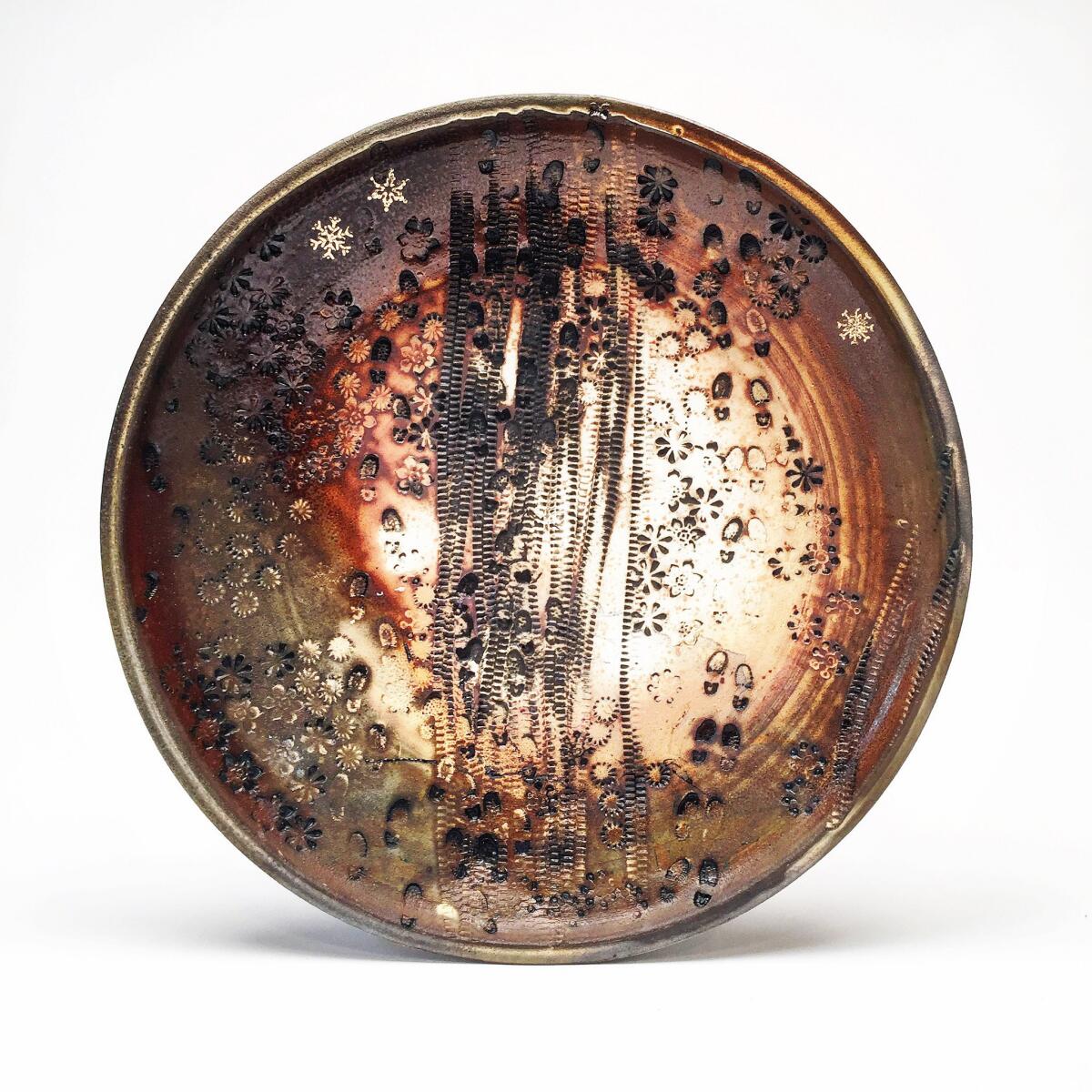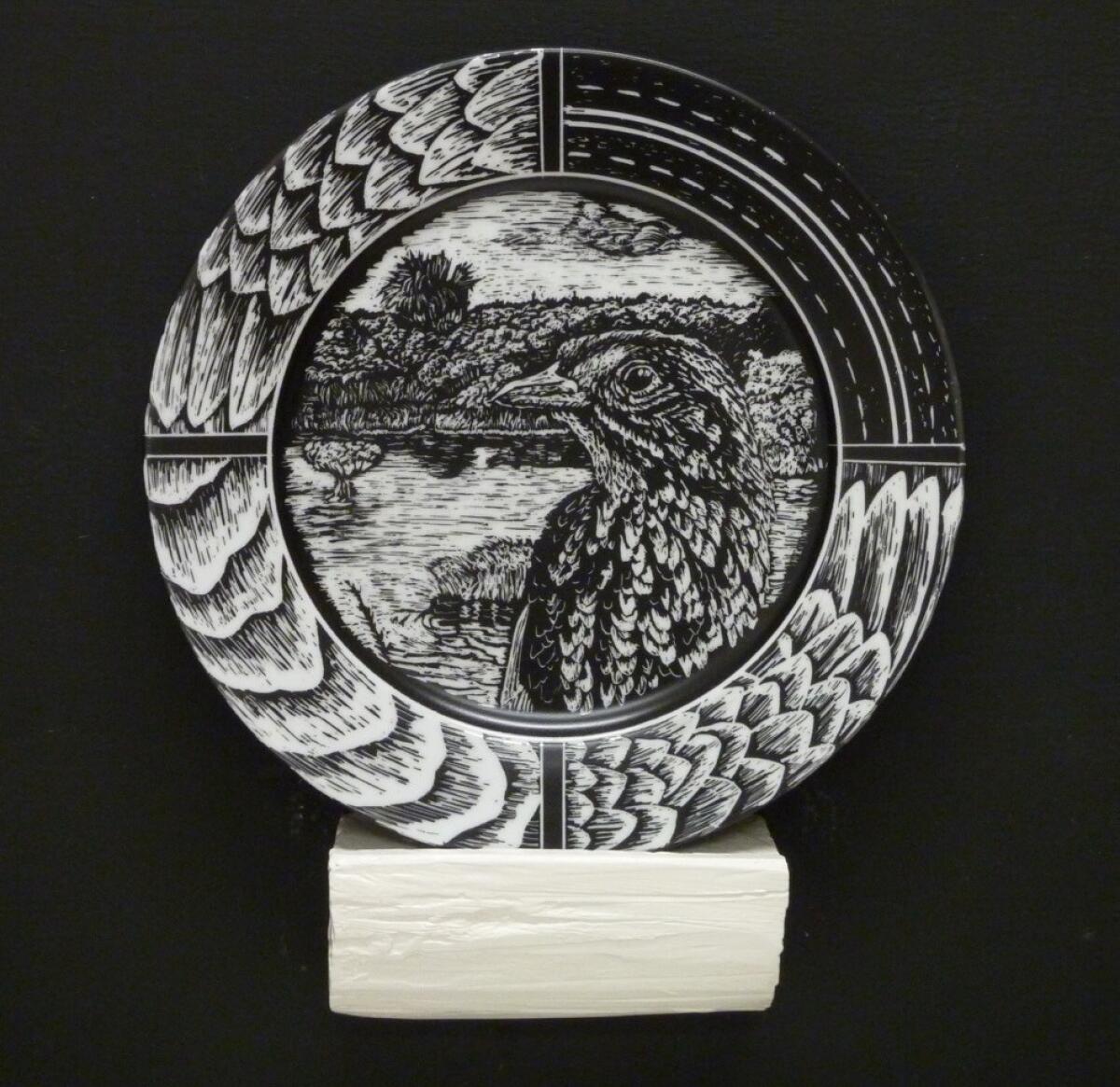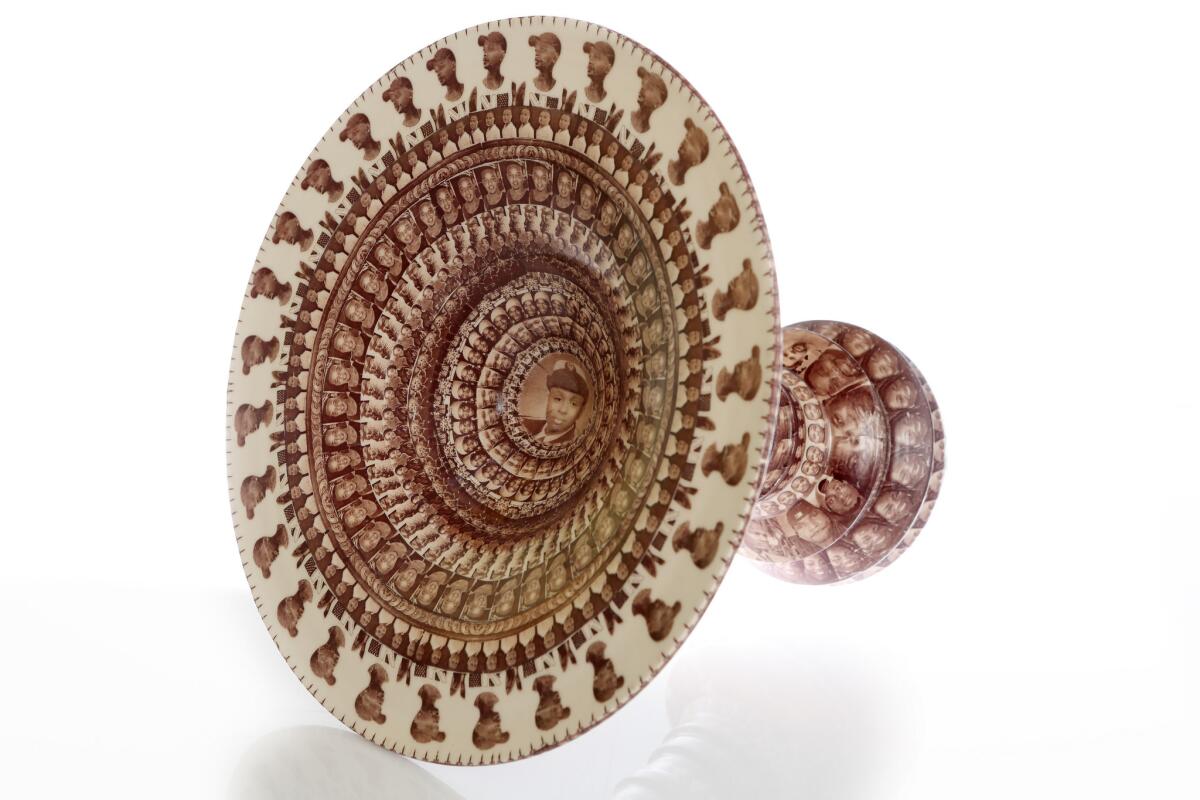Review: Resistance in clay: Ceramic artists speak out against Trump, war and more in ‘We the People’
- Share via
The call went out to dozens of artists around the country: Weigh in on the tumult and divisiveness of this political and cultural moment — using clay.
The result is "We the People: Serving Notice," a rousing show at the American Museum of Ceramic Art in Pomona. Following the invitation from AMOCA Director Beth Ann Gerstein, artists created functional objects reflecting the nation's present dysfunction and decorative pieces dealing with our indecorous realities.
Each work in the show is a conversation piece of the meatiest variety: a provocation, an act of resistance, a meditation on what is troubling its maker's soul. Many address broad issues through the lens of personal experience, and often, the wall labels offer a useful contextual bridge between public and private concerns.
Jesse Albrecht writes of being deprived of the requisite Small Arms Protective Insert when he served as a medic in Iraq. His “SAPI Plate” here mimics the shape of that chest-hugging ceramic shield, but it dismisses as a dark farce the idea that anything can protect against war's physical and psychic damage. Upon the black glazed surface appears the familiar image of the hooded torture victim at Abu Ghraib, enveloped within a larger, clownish ghost, whose speech bubble reads, "War is a racket."
Prevalent in the show are plates of one sort or another, a common-enough ceramic form that serves well as message-bearing surface, akin to a blank canvas or a demonstration-worthy sign. Justin Rothshank and Jeff Irwin both contribute affecting pieces that relate to environmental damage. "Breaking Trail Thru the Woods," with its embossed footprints, tire tracks and flowers, encapsulates the ongoing dilemma Rothshank faces as he intrudes upon and alters the very woods he enshrines as his family home. Irwin's porcelain and earthenware "Dusky Seaside Sparrow" borrows the manner of Italian majolica portrait plates to pay homage to a species forced into extinction when development destroyed its habitat and nesting grounds.


SIGN UP for the free Essential Arts & Culture newsletter »
Vessels get reinvented as vehicles of protest and earnest appeal. Peter Olson sheathes a bowl's entire base and broad mouth with sepia-toned photographic portraits of 100 unarmed African Americans killed by police. The images encircle the object, flickering like film stills, in a powerful gesture of tribute and lamentation.

Other works are organized around themes of political division, gender and sexuality, immigration and
In its organization of the exhibition, AMOCA treats freedom of expression as both a right and a responsibility. The museum supplies visitors with postcards and the addresses of elected officials if you too want to serve notice.
American Museum of Ceramic Art, 399 N. Garey Ave., Pomona. Through Dec. 30. Closed Mondays and Tuesdays. (909) 865-3146, www.amoca.org.
Support coverage of the arts. Share this article.
MORE ART:
What to do with Confederate monuments? One critic’s suggestion
The biggest entertainment stories
Get our big stories about Hollywood, film, television, music, arts, culture and more right in your inbox as soon as they publish.
You may occasionally receive promotional content from the Los Angeles Times.






